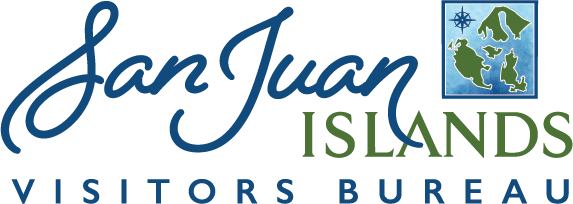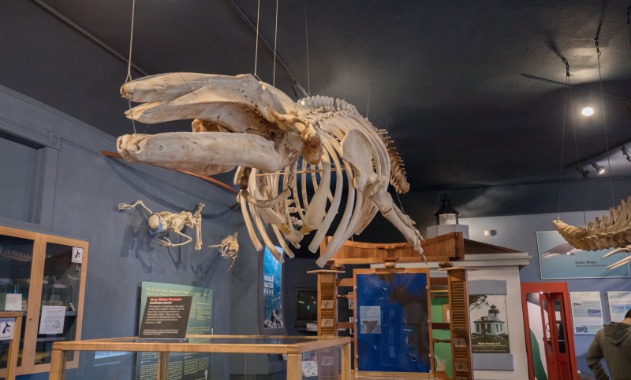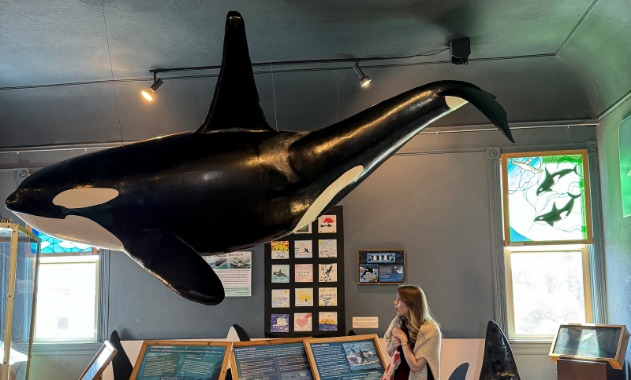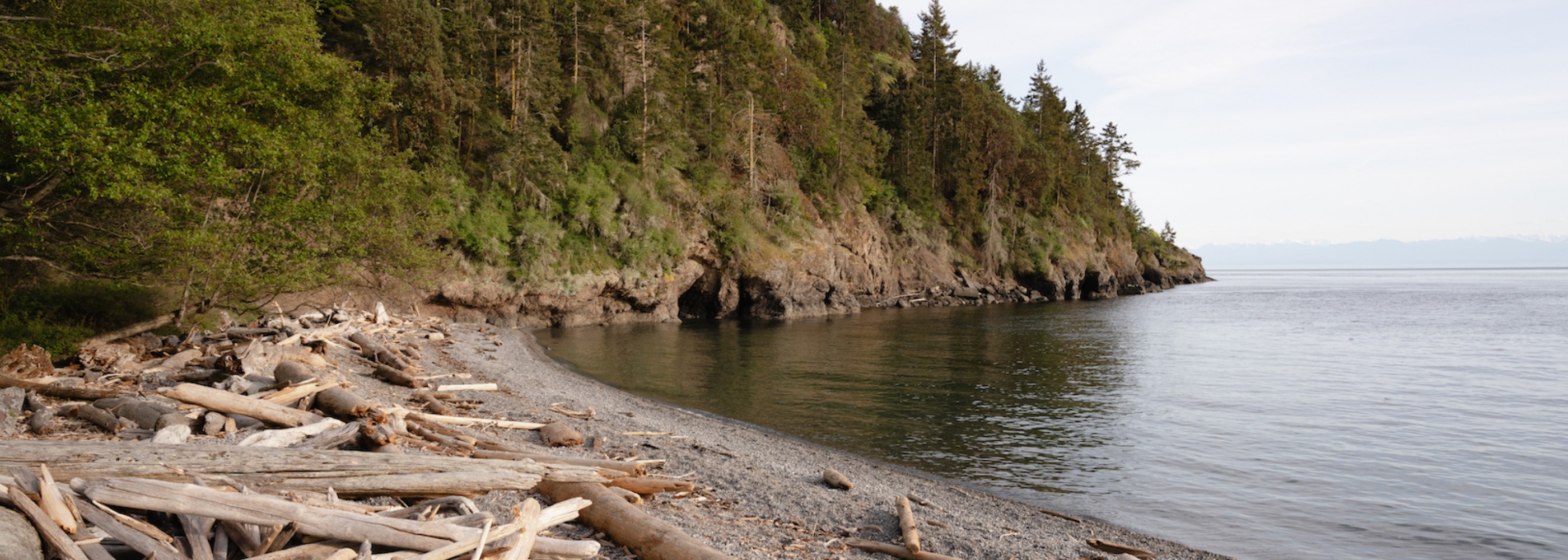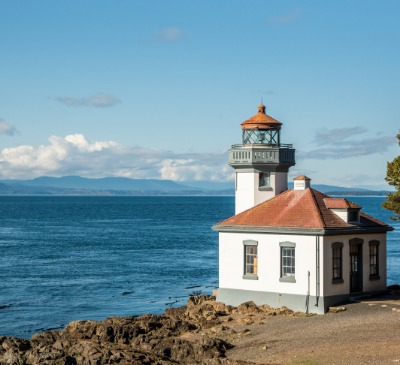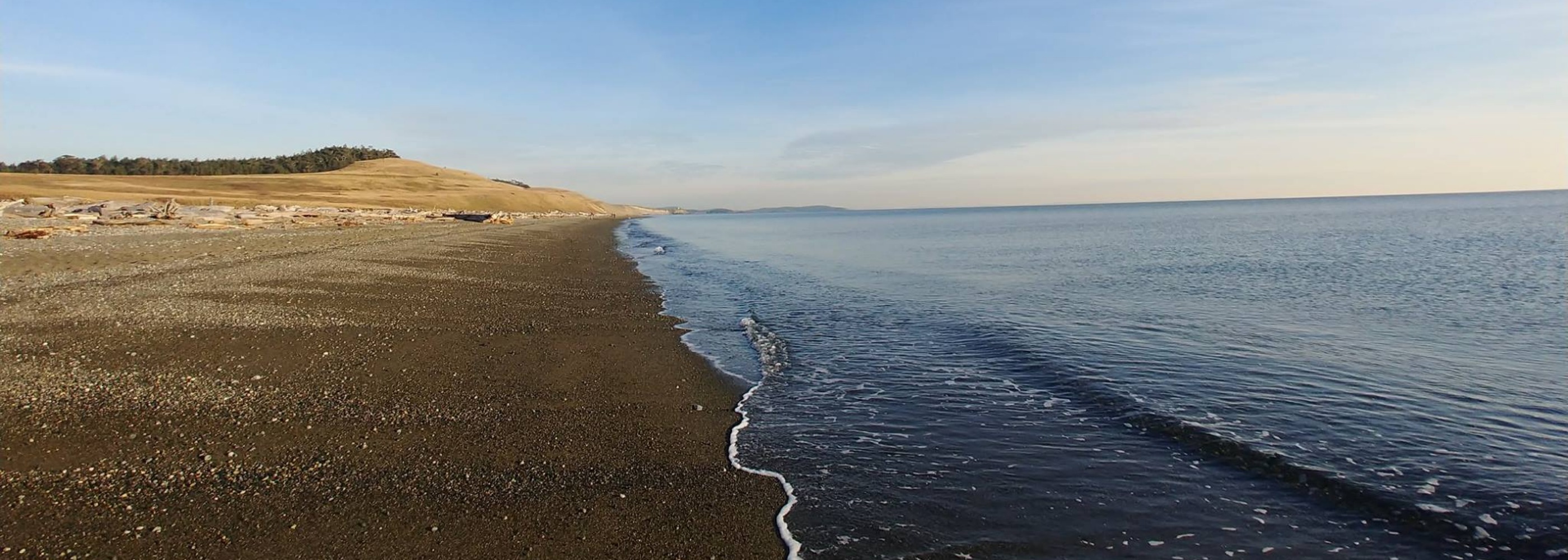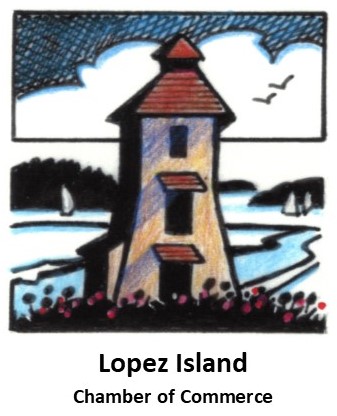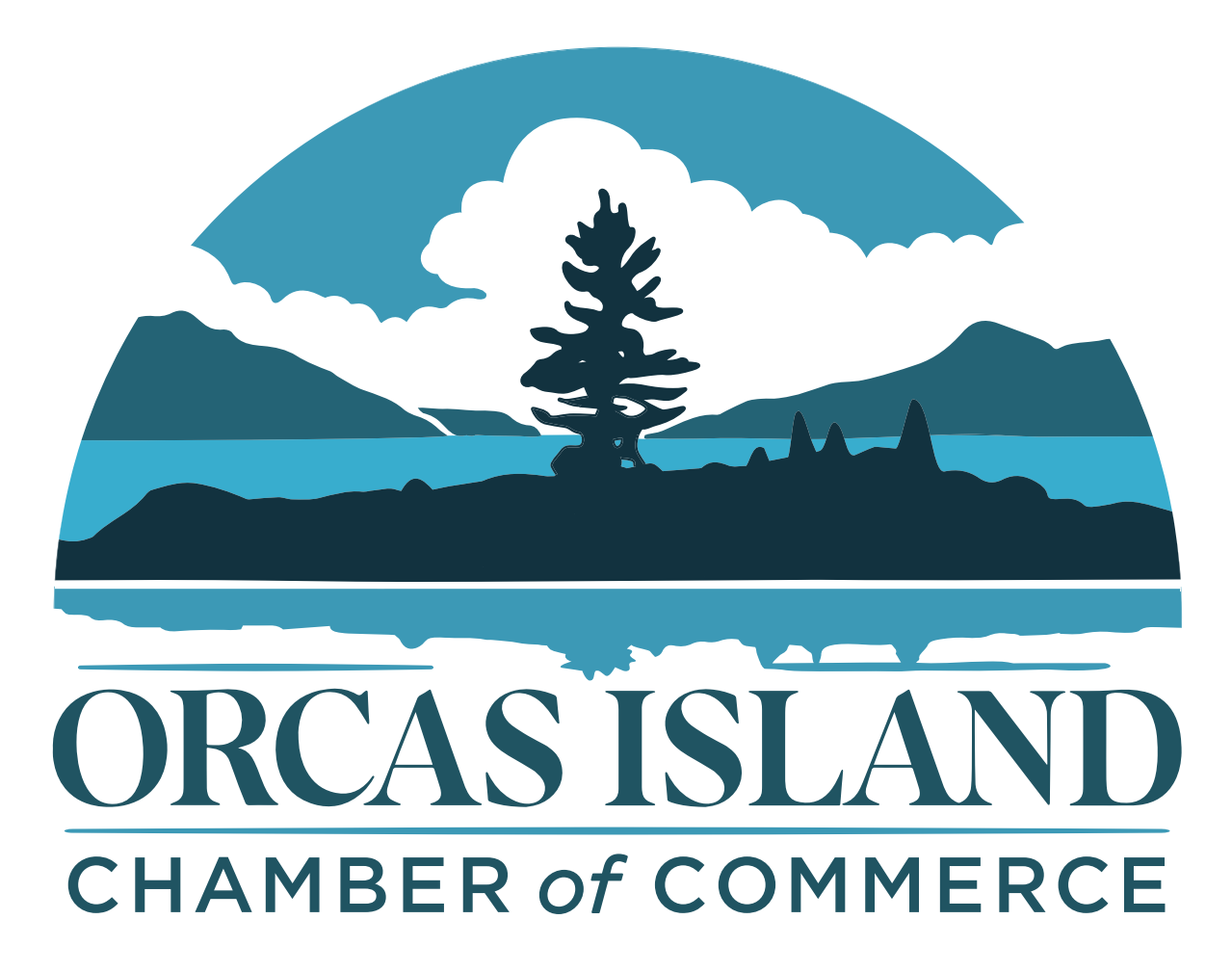Follow The Whale Trail
See orcas in the wild, learn about Salish Sea wildlife, and enjoy the ride into the whales' world
The San Juan Islands are one of the best places in the world to see beautiful black-and-white orca whales in the wild. Two ecotypes are commonly found in the Salish Sea - the critically endangered Southern Residents (J, K, and L pods) and transient, or Bigg's, orcas. You may catch them passing by from some of the coastal locations on The Whale Trail. This collection of whale-focused museums, parks and launching points run all the way down the West Coast, highlighting some of the best places to see and learn about whales.
The Pacific Northwest is also experiencing a “Humpback Comeback” and other whales, such as minkes and grays, can be seen in the area. There are several ways to see and learn about the beautiful and mysterious ‘blackfish’, as the Northwest Coast Native peoples in this region call them.
Here are a couple of ways to add whales to your San Juan Island trip:
The Whale Museum
Before setting out to see the whales in their natural habitat, stop by The Whale Museum to learn from experts about what you may see in our waters. One of the highlights of the museum is the skeleton of a young orca named Sooke (L-112) that mysteriously died in 2013. The museum shows the process of preparing the skeleton for display, and has several other exhibits where you can learn about the different kinds of whales that swim in the Salish Sea, hear their calls, learn to identify individual orcas by their markings, and learn what it takes to “Be Whale Wise” when viewing whales in the wild. This historic building in Friday Harbor, just three blocks from the ferry landing, also has a gift shop with a nice selection of sea-life related gifts, books, DVDs, toys, and lots more.
San Juan County Park
Find a guided kayaking wildlife tour.
Lime Kiln Point State Park
You can also visit Lime Kiln Point State Park (aka “Whale Watch Park”) on San Juan Island's west side. The Friends of the Lime Kiln Society (FOLKS) offer many free services, including an informative interpretive center, lighthouse, intertidal and park-wide tours, and fun special events during the summer.
Just a short walk from the parking lot, you can see a richly diverse environment, from rocky shorelines to wooded uplands. Seals, sea lions, and river otters cruise the shoreline through kelp beds and eel grass, looking for food. Eagles and seabirds reel overhead. The lighthouse was built in 1919 and still serves as a navigational beacon for ships in Haro Strait and offers tours during the summer. The park is considered one of the best places in the world to view whales from land, and there is a small seasonal gift shop and interpretive center where you can learn more.
American Camp & Cattle Point

Just off South Beach, part of American Camp on the south end of San Juan Island, lies Salmon Bank - a prey-rich hotspot for orcas, humpbacks, and other marine mammals. This is also where the whales enter and exit the Strait of Juan de Fuca and the Pacific Ocean. Be watching for wildlife before you even reach the parking lot, as bald eagles and foxes zigzag across the grassy headlands. Wind your way through the driftwood onto the pebbled beach and watch seabirds bob in the waves. Seals, sea lions, and the occasional river otter also cruise the shore, looking for a meal.
Cattle Point Lighthouse, on the southern tip of San Juan Island, was built in 1935, but a navigational lantern has been on watch here since 1888. Look for deer, eagles, seabirds, and marine mammals such as seals and sea lions from the shelter, picnic area and beach below. Whale Rocks, a collection of rocky islets popular with Steller sea lions, are visible offshore. When the wind is right, their grumbling can be heard for miles.
